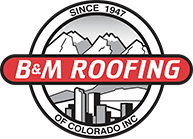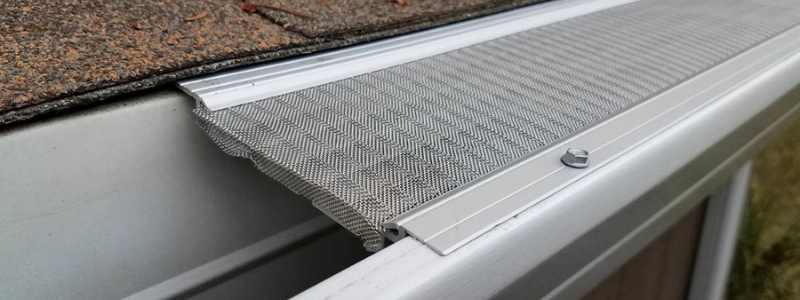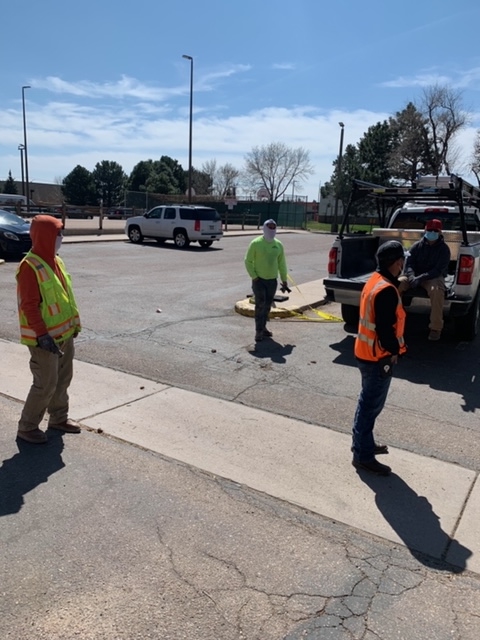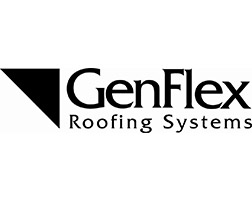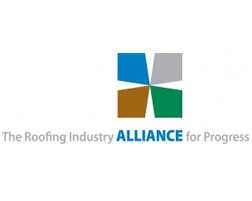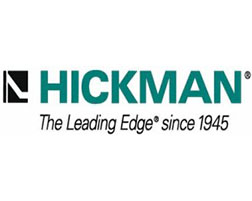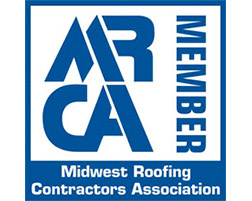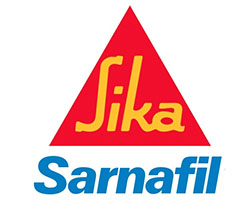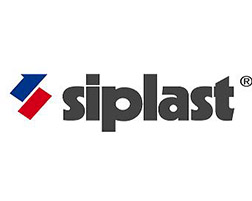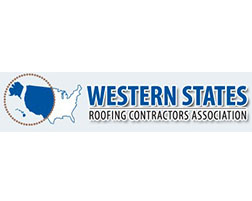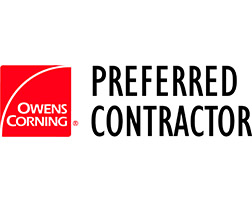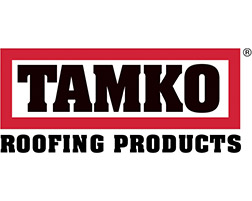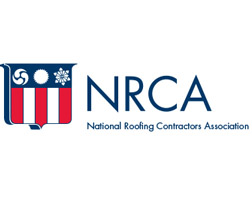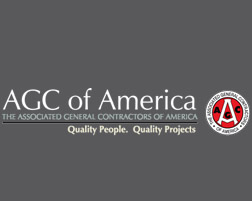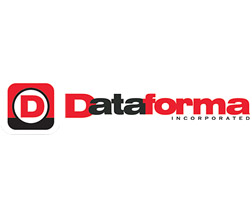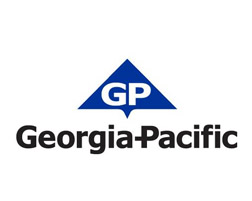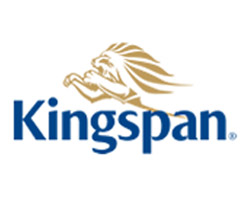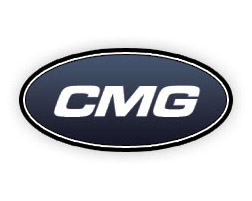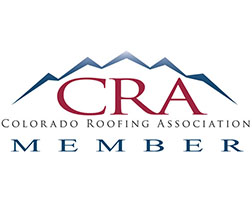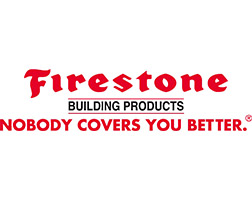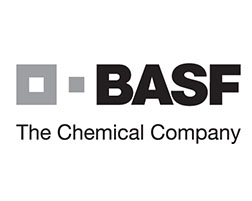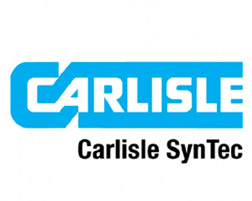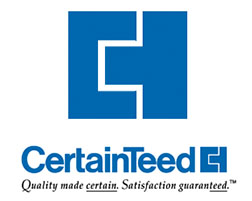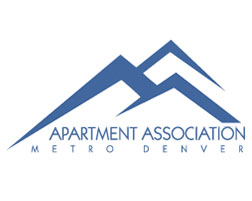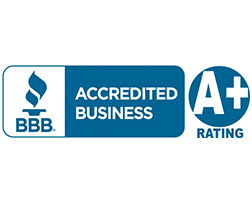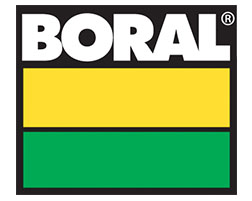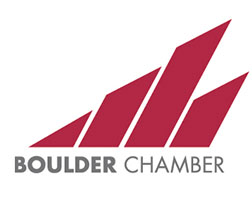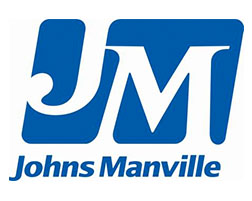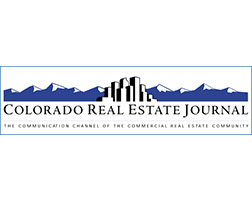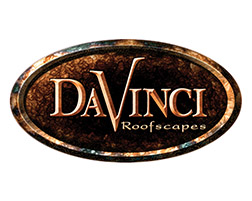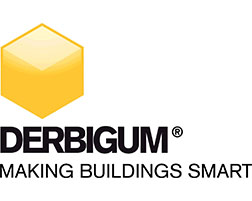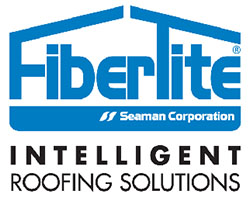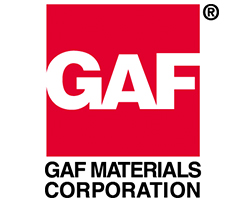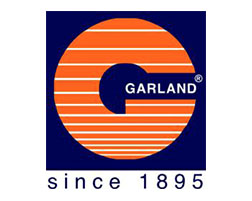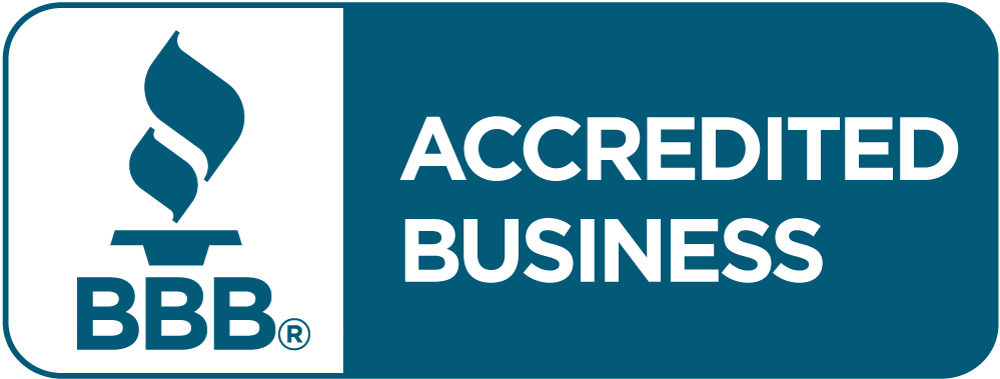Are Gutter Screens Worth It?
Clogged gutters can be a nightmare. They can lead to overflowing, which can then lead to water intrusion, which further leads to extensive, and expensive, water damage within your home. Gutter screens, also called gutter guards, are designed to sit on top of your gutter to prevent debris from falling inside them. This allows for rainwater to pass through freely, as the screens prevent clogs and blockages.
There is a variety of different kinds of gutter screens available on the market. Gutter screens can be made from:
- Vinyl
- PVC
- Steel
- Aluminum
Each type is engineered differently and has its own pros and cons. The most common type of gutter screen is a rounded screen that attaches to shingles on a roof, covering the gutters. The mesh captures debris and prevents it from entering the gutters.
Another type of gutter screen design is made from micro-mesh stainless steel, which allows rainwater to run through small holes while blocking leaves, sticks, and debris from falling in. Other types of gutter screens include surface tension guards, brush guards, and foam guards.
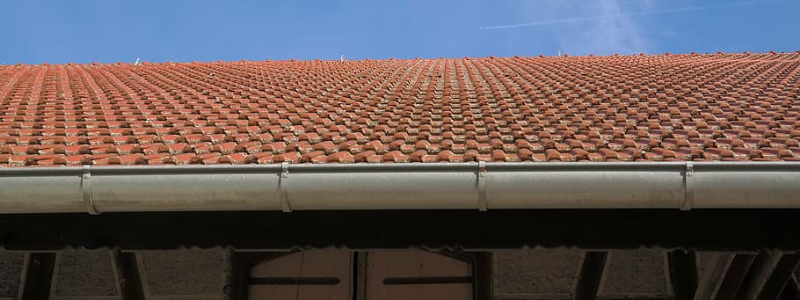
So, you’re probably asking yourself: are gutter screens worth it? The question is more complicated than it seems.
Depending on which type of gutter screen you choose, they can become quite costly. However, they can also significantly reduce gutter maintenance efforts and prevent blockages.
To help answer the question, “Are gutter screens worth it,” we’ve put together some of the benefits and drawbacks of having them installed on your home. Here are some of the pros and cons.
Are Gutter Screens Worth It: Pros
They make gutters easier to clean.
Gutter screens do a very good job at preventing the accumulation of branches, leaves, and shingle granules in your gutters. Therefore, you’ll find yourself having to clean your actual gutters less often. Gutter screens themselves must still be cleaned and maintained to keep them working efficiently. Cleaning gutter screens involves removing accumulated materials off the guards and potentially hosing them down. Gutter screens reduce the time it takes to clean your gutters. They are especially worth it if you have large trees surrounding or near your home.
They reduce ice dam formation.
Since gutter screens direct water away from your home and prevent the accumulation of stagnant water, the chance of ice dams forming inside the gutters is reduced. This is especially true if your gutter screens are heated. Ice can damage your gutter system and can be quite costly to repair. Heated gutter screens might be beneficial if you live in areas with harsh winters with cold temperatures and lots of snow.
They help to prevent animal infestation.
Gutter screens can prevent wildlife such as squirrels, birds, mice, and insects from nesting and breeding in your gutters. This is because they reduce the amount of stagnant water sitting inside your gutters.
Stagnant water attracts vermin and insects which can lead to infestation inside the home if the problem is not handled immediately. Gutter screens also work as a physical barrier for rodents who can navigate their way inside the home.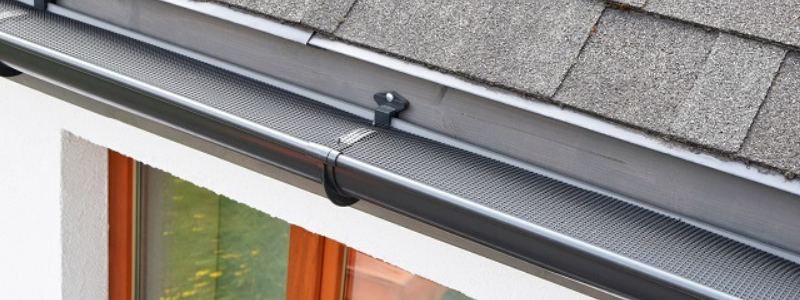
Installation can be easy and inexpensive.
Gutter screens can be easily installed without altering your existing gutter system. These are some of the most affordable gutter guard options. The price of gutter screens usually starts under $1 per linear foot, depending on the material used.
They prevent blockages and clogs.
Because gutter screens reduce the amount of debris that collects inside your gutters, the chances for clogs and blockages are diminished. Blockages and clogs can lead to water damage, erosion, and the formation of rust. It can also lead to water entering the home, causing mold and mildew to grow. Additionally, blockages and clogs that lead to overflowing can result in unattractive water stains on your home’s exterior.
Are Gutter Screens Worth It: Cons
Gutter screens need cleaning, as well.
Yes, it’s true gutter screens remove a huge load of cleaning your gutters manually, but it doesn’t remove the need for maintenance entirely. It is important to clean your gutter screens every so often, if they are left uncleaned, debris can accumulate on the screen and prevent water from passing through the mesh. Additionally, the added weight of debris build-up on your gutter screens can cause your actual gutters to become loose and sag, or even fall off completely.
They might not be effective if not installed properly.
Gutter screens are extremely effective when installed properly. However, poorly installed gutter screens might end up being a waste of your investment. Poorly installed gutter screens can dislodge during intense weather. Make sure you hire a reputable roofing company, such as B&M Roofing, and leave it to the experts. Installing gutter screens yourself can be a dangerous task, and it can result in poor installation and future damages.
They don’t last forever.
Nothing lasts forever, and that’s especially true for gutter screens. Basic gutter screens, such as those made from plastic can last 6 to 8 years depending on the climate you live in and how well you maintain your gutter system. The longevity of gutter screens also depends on how well they are installed and what materials are used. Screens made from metals such as aluminum, copper, and stainless steel will last much longer than screens made from plastic and foam.
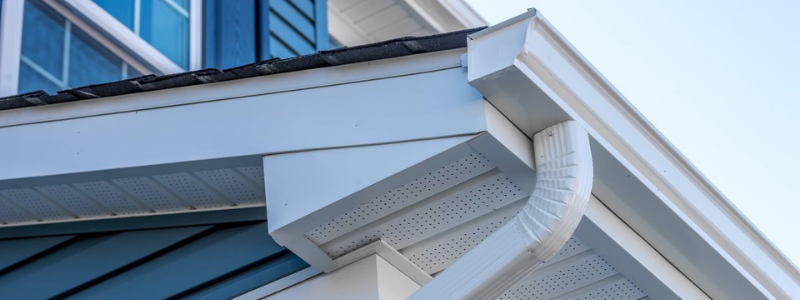
B&M Roofing: Colorado’s Best
Since 1947, B&M Roofing has been proudly serving homes throughout Colorado. Our team of expert roofers can help you decide which gutter system is best for your home and budget using extensive knowledge and best practices. We understand the challenges that roofs face in Colorado’s climate. We know how to restore and protect your roof and gutters to keep your home structurally sound. If you’ve asked yourself, “Are gutter screens worth it,” and your answer is yes, we can certainly help.
When it comes to our reputation, B&M Roofing is known for being fast, efficient, and cost-effective. Whether it’s maintenance, repair, or replacement, our roofing experts will do the job right. Contact us today for a consultation and an initial free estimate. We can provide well-backed suggestions to help you make well-informed decisions about your roof. Call us today!
Environmentally Friendly Roofs
When deciding on the details of your new roof, there are many factors to consider, especially if having an eco-friendly roof is a priority for you. Environmentally friendly roofs are typically more expensive than choosing regular asphalt shingles, but the long-term benefit of added savings and fewer repairs continue to convince homeowners to make the switch.
Many eco-friendly shingles out there in the market today are made from recycled materials such as plastic, wood, and rubber. There are also other eco-friendly alternatives that use new materials but still produce fewer emissions than traditional asphalt shingles.
Asphalt shingles are cheap to install but they’re not very sustainable. They’re almost impossible to recycle and release carcinogenic contaminants into the air when burned. On top of that, asphalt shingles require regular maintenance and repair because they’re easily susceptible to wind damage such as folds, cracks, and blisters.
Choosing to install an eco-friendly roof will significantly reduce the carbon footprint of your home and allows you to contribute to a healthier ecosystem, but those aren’t the only perks. Here are other factors that might persuade to switch to eco-friendly roofing materials:
- Recyclability
- Long lifespan
- Durability
- Improved air quality
- Reduced energy use and utility costs
When choosing the best eco-friendly roof option for your home, it’s important to know and understand when each type can be used most effectively.
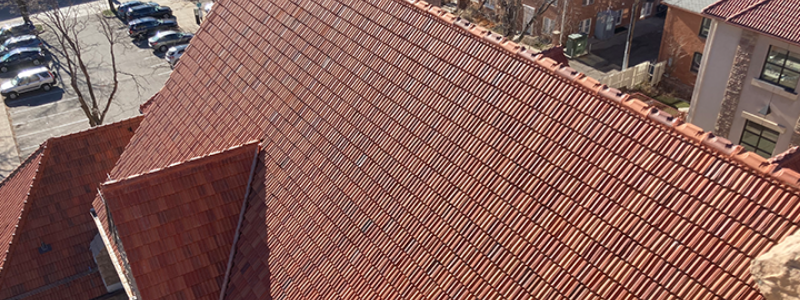
Here are the best options for environmentally friendly roofs for your home:
Cool Roofs
Cool roofs are roofs that have light-colored shingles. The light roof color reflects sun rays away from the foundation below, resulting in a reduced cooling load in the warmer months and lower utility costs. This type of roof is great if your home is exposed to large amounts of sunlight because it will prevent your home from absorbing too much heat.
Check out which roof colors are best suited for your home.
Clay Roofs
Roofing tiles made from clay are known to boost a home’s curb appeal but they can also help you save money on your power bills. Clay roofs provide adequate insulation for the home and can reflect heat from the sun. Air is free to circulate underneath clay tiles which helps regulate your rooftop temperature and maintain a comfortable temperature inside the home.
Another eco-friendly point is that clay tiles are completely recyclable if properly salvaged. They are also extremely weather-resistant and durable. However, because of its heavier weight, you must ensure a qualified and expert roofer does the installation for you. If the job is not done properly, you might be left with structural damage that can be not only expensive but dangerous as well.
Wood Shingles or Shakes
Wood shingles and shakes can easily be recycled and repurposed into new and usable products. This is why wood is an eco-friendly choice. These roofs also provide natural insulation that will help keep your home at a comfortable temperature, also making it an energy-efficient choice.
Wooden shingles or shakes are constructed with fire-resistant cedar or redwood and last between thirty to fifty years. Additionally, the authentic appearance and texture of wooden shingles can increase the home’s curb appeal. However, it’s important to note that wooden roofs require regular inspection to ensure it is free of rot and mold.
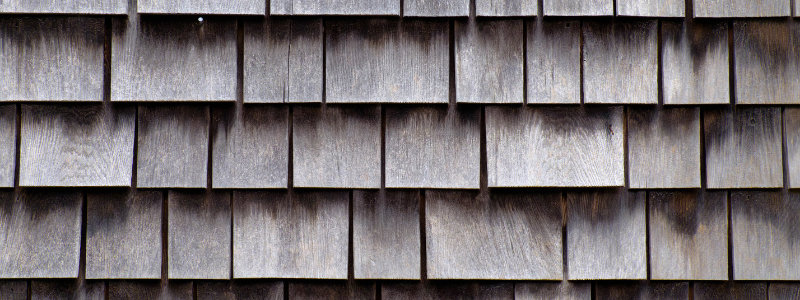
Rubber Roofing
Rubber shingles are made from recycled tires (95% recycled material) and all scraps left from manufacturing and installation are reused at the roofing material factories.
These types of roofs protect the home from heat, low temperatures, and harsh weather conditions. You can also get energy-saving perks with rubber roofing as it can insulate your home more effectively and efficiently. Since rubber shingles are highly resistant to water and ice, they are also crack-free which eliminates the chance of leakages.
Installing rubber shingles can have a higher upfront cost, but it is typically more affordable when you compare them to other eco-roofing materials. Additionally, the installation process is fairly easy and requires little to virtually no maintenance.
Metal Roofs
Metal shingles are made from at least 25% recycled material and are 100% recyclable themselves. Similar to cool roofs, metal roofs have reflective properties that deflect sunlight away from the home and can reduce cooling costs by as much as 25%.
Metal roofs are extremely durable, fire- and weather-resistant, and come with an approximate life expectancy of 50 years. Metal shingles come in a variety of alloys and styles, making them extremely versatile and they look great on any type of home. Additionally, they are 100% recyclable, giving your home that extra eco advantage.
Solar Roofing
Solar Roofing involves placing solar panels on an existing roof. Unlike metal and cool roofs, solar panels absorb sun rays and convert that energy into usable electricity.
Although the initial installation can be expensive, homeowners can expect to save thousands in utility bills throughout the roof’s lifetime.
It’s also worthy to note that the U.S federal government provides a 26% investment tax credit for home solar power systems.
The only issue that can arise with solar roofing is that it requires adequate amounts of sunlight to run efficiently. If you live in an area without widely available sunlight, solar roofing might not be the best option for you.
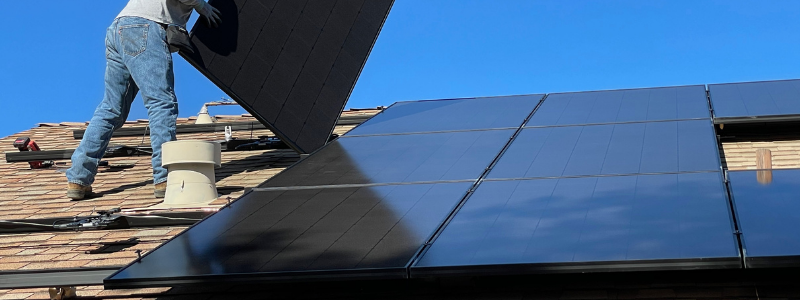
Green Roofs
A unique eco-friendly roofing option is non-other than a green roof. Green roofs transform the top of your home into a garden landscape. This type of roofing can provide extra cooling and insulation and can reduce the amount of rainwater runoff within your home’s exterior.
A green roof is one of the most environmentally friendly roofs available, however, it requires adequate maintenance. Plants on the roof require watering, feeding, and weeding. Poor maintenance keeping on green roofs can result in overgrowth or decay and become unsightly.
B&M Roofing Expertise
There are obvious benefits to choosing an eco-friendly roof for your home. Not only is it better for the environment. Eco-friendly roofing options tend to be cost-effective, energy-efficient, and durable.
Contact B&M roofing and request a free consultation. We are a trusted Colorado-owned company known for our commitment to excellence. Fill out this form online or call us today to start your eco-roofing project.
Metal Roof Fading
If you have a metal roof or are considering getting one, you should be prepared for it to fade and chalk over time. However, this is just one thing to be aware of when deciding whether to use a metal roof or not. This article will take you through some of the benefits of using metal roofs, what metal roof chalking and fading actually is as well as how to prevent it, and what the best colors may be for a metal roof.
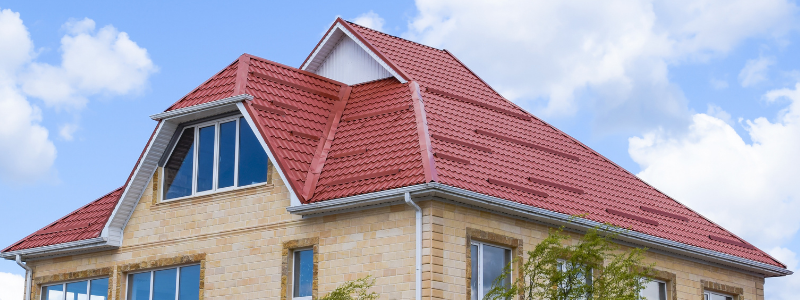
Why Use Metal Roofing?
There are many reasons why somebody might choose to go with a metal roof.
They are extremely durable and long-lasting, especially when compared to other traditional roof materials such as asphalt.
You also have the ability to customize the color of your metal roof’s paint, as they can be painted black, red, green, pink, or anything you’d want. In comparison, most asphalt roofs are very limited in their color options.
In addition, metal roofs are also very energy efficient: A basic, unpainted metal roof is estimated to save a traditional home up to 40% in energy costs. Metal roofs reflect sunlight, and therefore, can help keep buildings cool in the summer without the excessive use of air conditioning. They also provide excellent insulation in the winter.
Sustainability is another reason why people may choose to use metal roofing. Since metal is an easily recyclable material, many metal roofs these days are sourced from recycled metal. Additionally, since metal is an extremely durable material, you will need to replace it less often than you would with other roof materials, thereby reducing the total waste your home or business produces.
Lastly, you may want to use metal roofing simply because it looks cool! Metal can give a home or office a sleek, unique look that will set it apart from other buildings in the area.
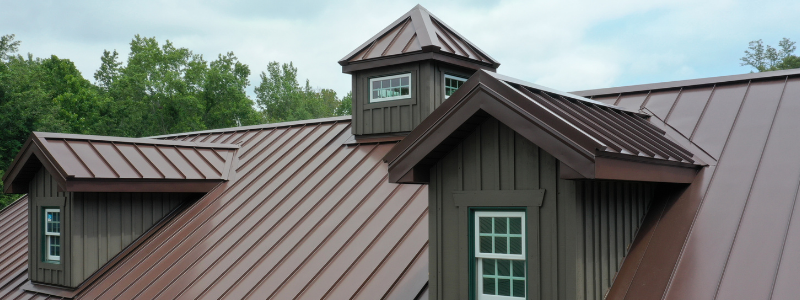
How Long do Metal Roofs Last?
With proper care, metal roofs are expected to last anywhere from 40 to 70 years.
In comparison, asphalt normally only lasts between 12 and 20 years, and wood shingles will last, at an absolute maximum, about 45 years.
Metal roofs are the most durable and long-lasting roof materials currently being used today.
Because metal roofs are so long-lasting, they will be significantly cheaper in the long run. Currently, metal roofs cost about twice as much as asphalt roofs, however, when you factor in that metal roofs will last up to 5x as long as asphalt, it’s clear that they give you much a better bang for your buck.
Metal roofs will often last longer, especially with proper maintenance. If you believe your roof is in need of service or repair, the roofing experts at B&M Roofing will happily come to give you a free estimate.
What is Metal Roof Fading?
Over time, environmental elements such as sun, rain, snow, and pollution will interact with and deteriorate a metal roof’s paint pigments.
A common misconception people have is that metal roof fading is causing damage to the roof, which is not true.
Metal roof fading is a natural process, as overtime, any paint color will fade with exposure to harsh elements.
However, although fading in and of itself isn’t damage to a roof, if it is not addressed, this can shorten your roof’s lifespan.
Paint protects the actual metal, and when the paint is worn down, the metal roof itself will wear down faster. This is one reason why you will want to make sure you are using high-quality paint for your metal roof.
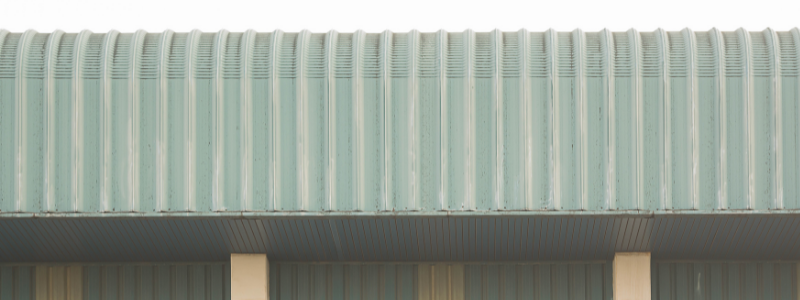
What is Metal Roof Chalking?
Metal roof chalking is the formation of whitish residue on painted or coated metal.
Unfortunately, this whitish residue is not actually true chalk- if it were, you’d definitely see a lot more roof repair companies dabbling in producing sidewalk chalk.
Metal roof chalking occurs through a similar process as metal roof fading.
As the paint or resin on your metal roof wears down, it will turn white and chalky, hence the name.
Once again, metal roof chalking isn’t indicative of damage being done to the roof.
But, since paint and resin are protecting the actual metal, unaddressed chalking can shorten a metal roof’s lifespan.
What Colors are Best for Metal Roofs?
The most important thing when selecting what color to paint your metal roof is to ensure that a high-quality metal paint is used.
If you’re overly concerned about chalking and fading, lighter, inorganic paint colors will chalk and fade slower, plus it will be less apparent when they do.
For example, it will be really difficult to see a light grey fade when compared to vibrant red color. Additionally, different paint colors can have different benefits- for example, a lighter roof will reflect more heat than a roof painted black, and therefore keep your home cooler in the summer.
Ultimately, chalking and fading are just one factor you should consider when making a decision about what color to paint your metal roof.
If you really strongly want a darker, or more uniquely colored roof, choose that color, and just make sure that you’re using high-quality paint.
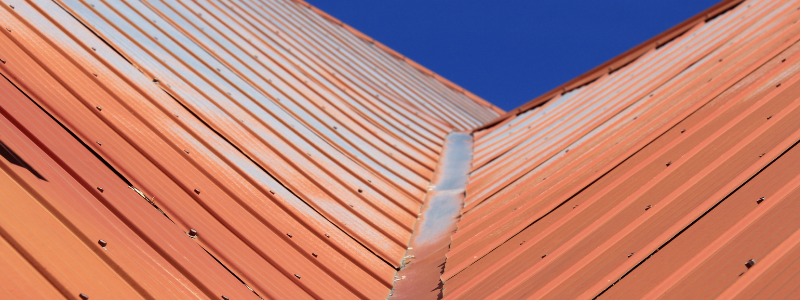
How to Prevent Metal Roof Chalking and Fading
Chalking and fading is a natural process, but there are specific steps that you can take to delay and mitigate their effects.
Lighter, inorganic paint colors will chalk and fade slower, and it will be less apparent when they do. In addition, choosing high-quality metal paints can, and will make a gigantic difference when it comes to protecting your roof.
You can also do the best you can to avoid exposure to certain elements, such as sunlight, moisture, and pollution. For example, roofs that face north are exposed to significantly less direct sunlight than roofs that face south.
However, roofs are obviously meant to provide you with protection from elements!
Finally, a great step to take is to purchase a roof warranty and ensure that the warranty you purchase covers chalking and fading.
Roof chalking and fading is a natural process that will happen over time, but a proper warranty will address chalking and fading. This will help protect your metal roof’s lifespan while keeping your roof looking the way it’s supposed to.
If you’re interested in installing a new roof for your home or business, look no further than B&M Roofing.
We are true experts in roofs, having skillfully provided reliable roof coverings since 1947. We can give you a free estimate, & will work with you every step of the way, from determining which roof (metal or not) is best for you, installing your new roof, and providing regular maintenance.
How to Stop a Roof Leak Temporarily
At B&M Roofing of Colorado, we understand that figuring out how to stop a roof leak can be a homeowner’s worst nightmare. Watching water seep through your roof and cause damage to your home can be incredibly stressful, especially while waiting for emergency roof repairs. That’s why we offer prompt emergency roof service requests to address your needs quickly.
In the meantime, we want to help you minimize further structural damage while you await our crew’s arrival. Here are some temporary measures you can take to manage a roof leak until we can perform more permanent repairs. Your home’s safety and protection are our top priorities, and we’re here to support you through this challenging situation.
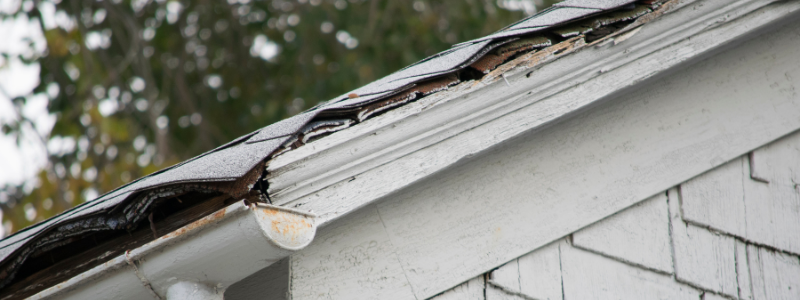
Common Signs of a Leaky Roof
Identifying a leaky roof can be crucial to maintaining the integrity of your home. There are several telltale signs that your roof may need repairs.
First, check for water stains on the ceilings or walls inside your home. These yellowish-brown spots often suggest that water is seeping through the roof and can indicate a developing issue that needs immediate attention. Another sign to look out for is missing, cracked, or curled exterior shingles. A damaged roof can allow moisture to penetrate, leading to leaks. Walk around your house or use binoculars from a safe distance to inspect the shingles closely.
Pay attention to any unusual drafts or increased energy bills. If your roof is not effectively insulating your home, it can lead to higher heating and cooling costs. Additionally, notice any signs of mold or mildew, particularly in the attic or near the roofline. These fungal growths thrive in damp conditions and can clearly indicate water intrusion. Finally, after heavy rain or snow, check your gutters and downspouts. If water is overflowing or pooling around the foundation, it could mean your roof drainage system is compromised, possibly due to leaks.
By being on the lookout for these signs, you can proactively address any potential roofing issues before they escalate into more significant problems. Regular inspections and maintenance are key to prolonging the life of your roof and protecting your home. Identifying a leaky roof can be crucial to maintaining the integrity of your home. There are several telltale signs that your roof may need repairs.
These are just some of the most common areas to look for roof leaks, but there are more tell-tale signs of missing shingles, mold or mildew, rotted wood, and discoloring on the ceiling side of your home.
Temporary Leaking Roof Repair
At B&M Roofing, we understand that water naturally flows downhill, and often, the lowest point for drainage can be located above your ceiling. To effectively manage drainage and reduce the risk of water damage in your attic, it’s crucial to identify the wettest area of your roof, which may appear as a bulge if the leak has been neglected for some time.
By carefully puncturing this bulge with a finish nail or a similar small tool, you create a pathway for the trapped water to escape into a bucket below. This proactive step can significantly alleviate water damage and is much more manageable than the extensive repairs required for a severely water-damaged ceiling—Trust B&M Roofing to provide effective solutions for your roofing needs and prevent further damage to your home.
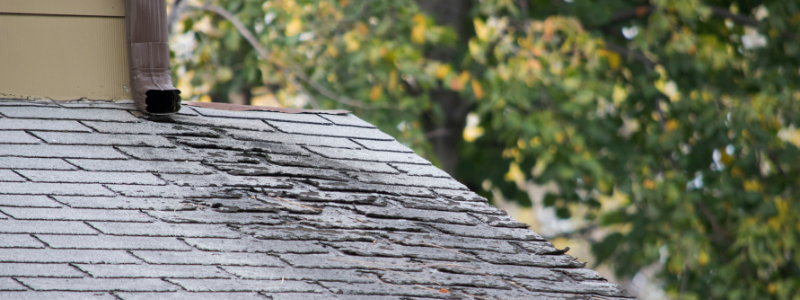
Locating the Roof Leak
At B&M Roofing of Colorado, we know that the most challenging part of addressing a leaky roof is pinpointing the source of the leak. Once you’ve identified the leak, finding a temporary fix becomes much simpler.
If you’re comfortable, we recommend inspecting your attic to check the roof deck, which is the underside of your roof. Leaks often originate from joints between plywood. It’s important to note that the leak may not be located directly above or below where you observe the water damage.
If the leak isn’t immediately visible, we have an effective method to help you locate it, though caution is key. Water can travel along your roof before it starts to show in your ceiling, so it’s crucial to find the source of the leak before it leads to extensive damage. The best time to search for a leak is when there’s water running on your roof.
Don’t wait for a heavy rainstorm to cause significant water damage. Instead, control the water flow using a garden hose on the roof. A small amount of water in targeted areas can help you locate leaks. Ideally, have someone else in the attic with a flashlight to spot any moisture – the water will reflect the light, making the leak easier to see.
If you don’t have access to an attic, you can look for clues by pouring water on areas like flashing, ridge caps, roof valleys, and gutters or downspouts. If possible, set up a bucket in your attic to catch dripping water and prevent further damage to your home.
Remember that patching a leak from the underside of the roof deck using tar, shingles, or plywood is only a temporary solution. It’s crucial to address water intrusion promptly to prevent additional property damage.
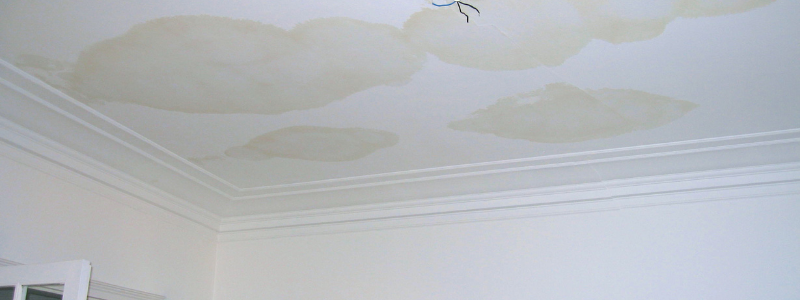
Get Started With Expert Roofing Services Today!
At B&M Roofing of Colorado, we understand that knowing how to fix a leaking roof temporarily can cause significant stress and more extensive damage if not addressed promptly. That’s why we prioritize immediate response for our customers. Our dedicated emergency response teams are always on standby, equipped, and ready to tackle leaking roofs whenever and wherever you need us.
If you’re facing a roofing emergency, you can rely on our expertise to provide swift and practical solutions. Don’t let a slight leak become a significant issue—reach out to us without hesitation. Contact us today or conveniently fill out our emergency service request form on our website. Our experienced team is here to ensure your home is protected and safe—Trust B&M Roofing to be your dependable partner in preserving the integrity of your roof.
Roofing Basics
Roofs are complex structures that consist of many different components. To understand how a roof is built and maintained, it’s important to know some roofing basics. This will allow you to feel more confident when hiring an expert roofer. This information may provide useful when the time comes to make needed repairs or completely replace a roofing system.
These roofing basics consist of knowing for definitive characteristics:
- what roofs are made of
- the individual structures that comprise a roof
- how a roof is built
- what to look for when purchasing a new roof
Read on for more, or contact us directly at (303) 443-5843 for immediate answers. We’re happy to provide general information on roofing systems as well as a free estimate.
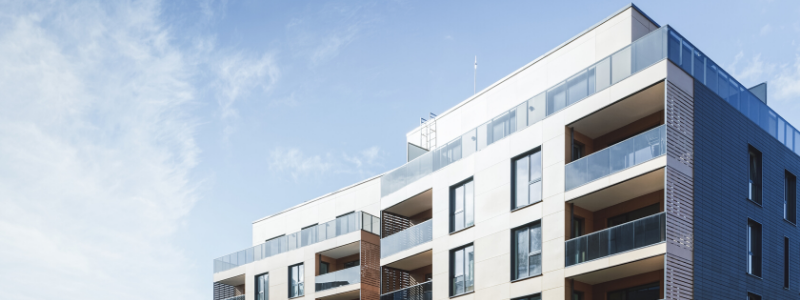
Roofing System Basics
Roofs can be made out of a variety of different materials. Each material serves the same basic function—keeping the interior of your home protected from the elements. However, some materials are better at serving that function than others. It depends on the home itself, as well as the climate of where the home is located.
Here are some good roofing basics to remember about climate and roof styles. The two most common roof types are flat roofs and sloped roofs. Flat roofs are often used in areas where the climate is dry and arid, meaning that rain and snow are rarities. Sloped roofs are often used in areas where rain and snow are more frequent since sloped roofs allow rain and snow to be redirected off of the roof and into the ground.
Flat roofs
Flat roofs are often made of a built-up roof, PVC membrane, EPDM rubber, or modified bitumen. Each one of these materials is quite inexpensive, making them easier to use and install than the materials you would use for a sloped roof. But, along with that, these materials are designed for durability and longevity. They can withstand heavy foot traffic as well as intense heat.
Sloped roofs
Sloped roofs are often made of materials such as wood, steel, slate, or sometimes flagstone. These materials form the tiles, corrugated sheets, or shingles that protect the under-portion of the roof from rain and snow. While these materials are quite durable, they are used, primarily, to prevent water from flowing into the under-portion of a sloped roof.
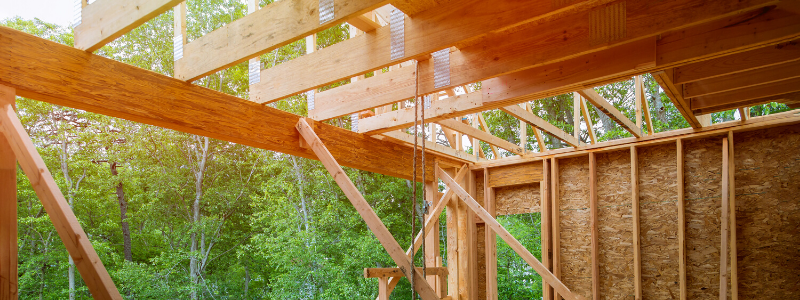
Roofing Structure
Every roof consists of several different facets. Each one of the facets that comprise a roof serves a very important function that ensures the roof is stable and capable of serving it’s primary function – keeping the interior of your home protected from the elements.
Rafters/Trusses
In order for a roof to be held up, there must be a structure in place that has the ability to hold up the roof. For most roofs, this structure consists of several rafters, or trusses, depending on the roof. Rafters/trusses are often made of either metal or wood, and they serve as the basic foundation of every roof.
Sheathing
On top of the rafters/trusses, there is sheathing. Sheathing often consists of solid boards or sheet material. With this sheathing, the structure above the rafters/trusses – your home – is not only protected, but the structure above the rafters/trusses has a stronger foundation, which allows the roof to be stable and secure.
Underlayment
To enhance the effectiveness of the sheathing, underlayment is laid. Most underlayment is made of paper, and it’s used to shield the sheathing from rain and snow.
Roof Covers
On top of the underlayment, there’s the roof cover. For flat roofs, this is usually PVC membrane, built-up roof, EPDM rubber, modified, or modified bitumen. These materials form the flat surface of the roof. But, for sloped roofs, the roof cover usually takes the form of shingles and tiles.
How Is A Roof Constructed?
Let’s review some roofing basics for the actual roof build. In order for a roof to be constructed properly, there are all kinds of different variables that must be considered and understood.
Select styles
To begin constructing a roof, a style must be chosen. As mentioned earlier, the two most common roof styles are flat and sloped. For wet and snowy climates, like in Colorado, a sloped roof is far more practical. But, for arid climates where rain and snow are rarities, a flat roof can be very useful.
Select materials
When a style has been chosen, materials must be selected. Flat roofs tend to work very well with materials such as asphalt and metal. Sloped roofs work well with wood and metal, as well as tiles and shingles made of clay, wood, and metal.
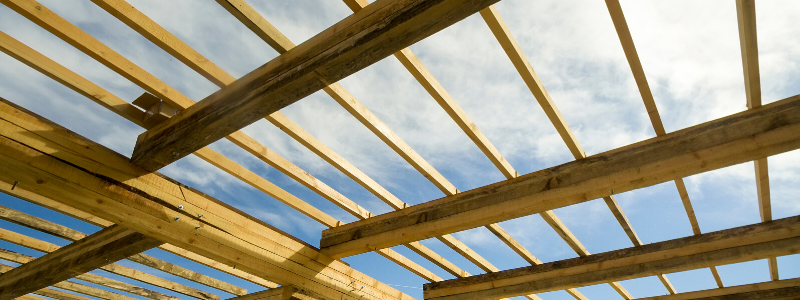
Measuring a roof
Right after the style and materials have been chosen, a series of measurements must be taken. During this step, it’s important that strict attention to detail is provided; the measurements should be precise for a final, quality product. These measurements have to do with the
- size of the roof
- where the roof is going to be installed
- the pitch of the roof.
Without these measurements, it’s likely that the roof will be inconsistent and, as such, inadequate for the building it’s being installed on.
All of the style and material choices will take a while, and the same goes for the measurements. But, when that process is finished, the actual building of the roof can commence. Building the roof consists of four basic stages.
Construction roofing basics
The first stage consists of setting up the trusses/rafters. Without these structures, there’s no foundation for the roof. Then, the second stage consists of laying out sheathing along the trusses/rafters, and the sheathing provides the basic surface of the roof. Right after that, underlayment is laid across the sheathing, to protect the sheathing from rain and snow. Finally, the cover of the roof is installed.
For people who own commercial properties, it’s especially important that they understand how the commercial roof of that property was installed. Without an understanding of the materials that were used, the measurements of the roof, and the roofing systems that the commercial roof uses, it’s a lot more difficult to properly clean that commercial roof.
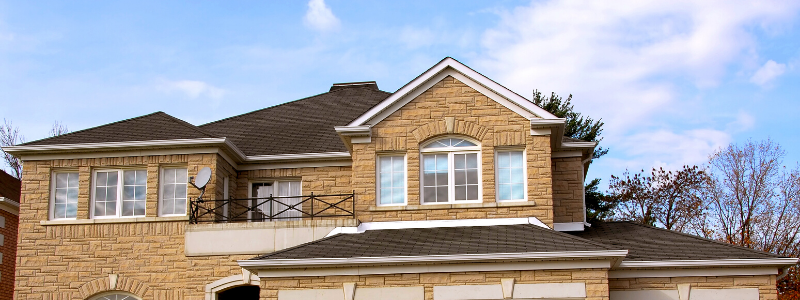
What Should New Homeowners Know About Their Roofs?
When buying a home, homeowners should be aware of several key attributes. Each one of these attributes greatly affects the longevity and quality of the roof, as well as the roof’s ability to keep your home protected from the elements.
Age of Your Roof
Every new homeowner should be aware of just how old their roof is. Most roofs last twenty-five-years, give or take. Past that date, though, the roof gradually loses its durability and becomes weaker. If the roof of that new home is old, then it may need to be replaced far sooner than expected.
Type of Roof
Every homeowner should be aware of whether or not any of the shingles – or tiles, depending on the roof – on their roof have fallen off, or are in the process of falling off. If they are, that can easily lead to moisture falling through the roof and into the home. Plus, it also means that the roof is quite old and in need of repairs and, possibly, a replacement.
Condition of Your Roof
If those same shingles are falling apart and losing granules – granules are small pieces of the shingle that comprise the entirety of the structure- that’s a sign that the shingles need to be replaced. Without these granules, the shingles are incapable of protecting your home from the elements.
On a flat roof, new homeowners must make sure that the roof is smooth, clean, and free of punctures and cracks. Punctures and cracks can easily allow for moisture to flow straight into the home.
Along with that, it’s also important to check for whether there’s a build-up of mold or mildew, and whether or not water is congregating along a certain area of the roof. If there’s a build-up of mold and mildew, this could lead to structural problems later on. If water is pooling up around certain areas, that’s a sign that the drainage on the roof is lacking.
Summary of Roofing Basics
- On a flat roof, it’s important to make sure that the roof is free of punctures and cracks
- The two most common styles of roofs are flat roofs and sloped roofs. Flat roofs are meant for arid climates. Sloped roofs are meant for climates where rain and snow is a regular occurrence
- Roofs are comprised of rafters/trusses, sheathing, underlayment, and roof covers. Each has its own function and is an essential part of keeping a roof healthy and maintained.
- Different materials and styles are better choices, depending on the climate
- New homeowners should make sure there is no mold, mildew, or water on the roof
- If the shingles are losing granules, that means that they must be replaced because those shingles protect the home from rain and snow. For more tips on when it’s time for a replacement roof, go here.
- Every new homeowner must know the exact age of their new home’s roof
We Are Open During COVID-19
We at B&M Roofing hope this message finds you, your families, and your colleagues doing well. As we all learn to navigate through the current crisis of COVID-19, it’s what we do together that is going to shape the future for us all. We are taking extra precautions to promote health and safety in our office and on all of our projects. We want you to know B&M Roofing is still working as an essential business and we are eager to assist you with all your roofing needs. This means all of our employees are encouraged to work from home when possible and we are doing what we can to continue to be successful on our projects including:
- Practicing social distancing
- Putting a strong emphasis on avoiding group interactions
- Hand sanitizing stations on our job sites and in our office
- Checking and recording employees health at the beginning of each work day
- Providing our crews with personal protective equipment (PPE)We thank all of our customers for supporting us over the years and we look forward to overcoming this together.
We are offering free roof inspections, emergency roof repairs, flat roofing, steep roofing, and metal panels. Continue to contact us at 303.443.5843 or submit an online request for your services: https://bmroofing.com/service-requests/
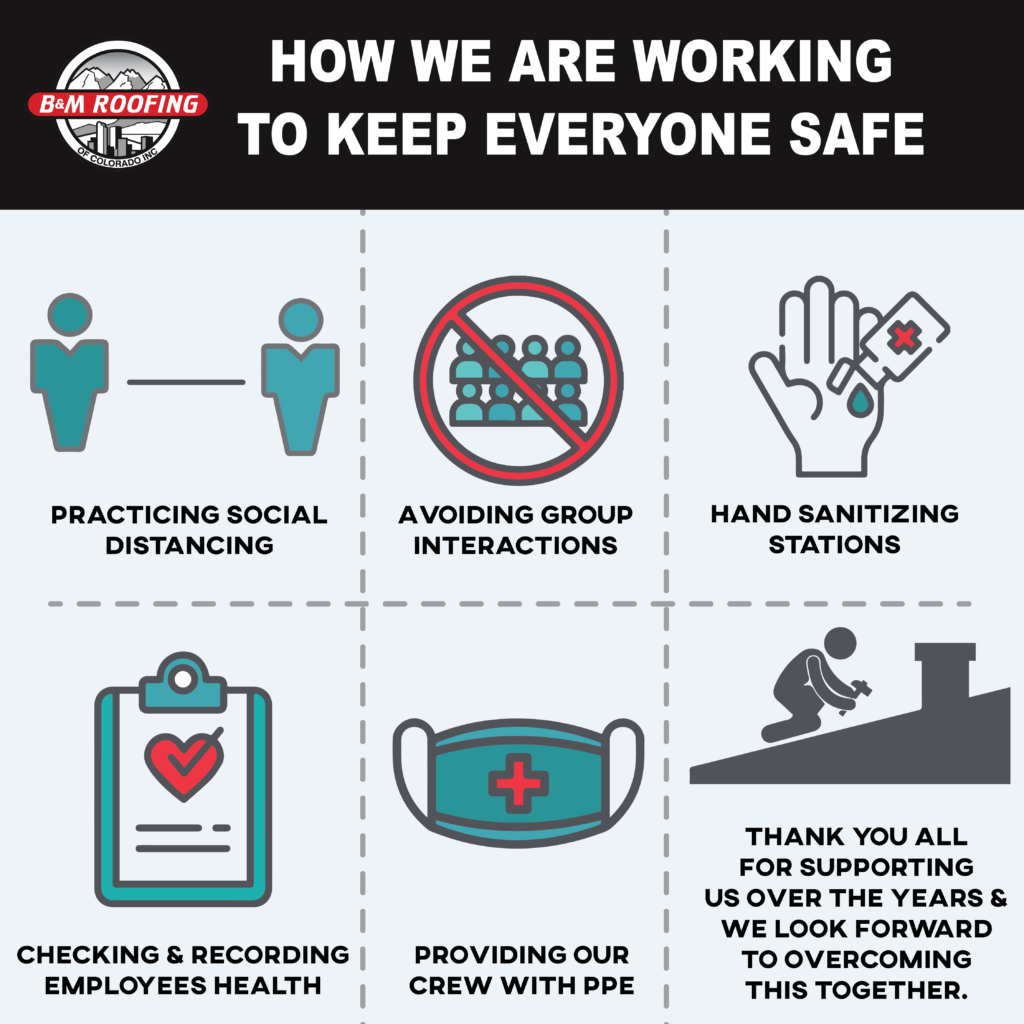
Coronovirus Safety Stand Down
COVID-19 BEST PRACTICE TASK FORCE
AGC of Colorado’s Best Practices Task Force is asking all AGC/C members to hold Coronavirus Safety Stand Downs at their jobsites on Thursday, April 9th. The Coronavirus Safety Stand Down is a national movement orchestrated by AGC of America. The event will occur throughout the day due to the stand down being on a rolling schedule to help limit large crew gatherings. Click HERE to view a special message from AGC of America CEO Stephen E. Sandherr on why you should participate. AGC of America’s safety team has crafted guidelines to help you organize the stand downs in a socially distanced way and provide content to share with your teams. Please click HERE to download the stand down resources kit. The kit includes a simple guide to participate in the stand down as well as toolbox talks and other resources.Draft agenda for Thursday’s Coronavirus Safety Stand Down:
- Rolling stand-downs will begin between 9:00 and 10:00. All groups limited to no more than 10 people.
- AGC of America’s Coronavirus Toolbox Talk will be reviewed.
- Highlight the new signage and posters for COVID-19 Safety that AGC has made available.
- Stress that the COVID-19 protocols are safety requirements that are equally important as other safety requirements on the project. (For example, as important as fall protection.)
- Stress the need for workers to maintain social distancing and not take breaks with anyone other than their small work crews.
- Stress that we are under a microscope in terms of the public and there is still a potential to be shut down.
- Wearing face coverings when on site shows the public we are taking this seriously.
- If you don’t follow the rules, you will be told to leave the job.
- If we don’t follow the rules as a group, the job could be shut down.
Additionally, the AGC of Colorado’s Best Practices Task Force is encouraging every contractor to purchase an AGC COVID-19 Prevention banner for each of their jobsites. The banner represents the commitment and solidarity to workers, their families and the communities in which we work. Order your banner from Gary at Ken’s Reproductions (gsmith@kensrepro.com) or click HERE to download.Please email info@agccolorado.org if you plan to participate in the Coronavirus Safety Stand Down and let us know approximate number of employees participating so that we can update AGC of America and the local media.
National Roofing Week 2019
B&M Roofing of Colorado is proud to celebrate the National Roofing Contractors Association’s (NRCA) National Roofing Week June 2-8, 2019! Each year, the NRCA sets aside a week to raise awareness of the significance of roofs on every home and business and to share the good deeds of the roofing community.
On June 7th, the NRCA will be hosting it’s first NRCA Giving Day to raise funds that will benefit the Melvin Kruger Endowed Scholarship Program. This scholarship program was created to help shape the future of the roofing industry. Their goal is to raise $100,000 in gifts to provide additional scholarships to students pursuing a career in the roofing and building construction industries.
Additionally, all NRCA members are encouraged to engage with and contribute to charitable organizations within their communities. B&M Roofing often works with Habitat for Humanity by donating our services to their projects. Currently, we are working on a project in Loveland, CO and another in Boulder, CO.
How To Celebrate National Roofing Week
The NRCA is holding a social media campaign this year that calls for members to “Share Your Story.” Members are encouraged to post photos and tag the NRCA each day in posts that a representative of the daily themes. Here are the themes:
- Sunday: National Roofing Week Kick Off
- Monday: Charitable Projects – demonstrate charitable giving
- Tuesday: Employee Training – demonstrate how workers are trained
- Wednesday: Employee Appreciation – share photos of employees
- Thursday: Signature Projects – showcase any signature commercial or residential projects
- Friday: Celebration – How each company celebrated the week
- Saturday: Wrap-up
You can follow the NRCA on social media to enjoy all of the shared stories and check out B&M Roofing on Facebook to see our stories!
B&M Roofing of Colorado Donates New Roof to Fort Collins Family Home Following Sudden Loss
Through Colorado State University’s CM Cares program, B&M Roofing of Colorado, donated supplies and services to reroof the Mochan Family’s house in Fort Collins.
After the tragic death of both parents, the children of the Mochan Family moved in with their aunt and the number of household repairs needed to accommodate the three children soon surfaced. CM Cares was contacted to assist in restoring the family’s home.
CM Cares is a construction management department initiative that promotes service-learning by infusing leadership traits, team building and ethics through community service activities. It focuses on teaming students, faculty, staff and industry partners to assist with construction-related projects for people with special needs or local community service agencies needing assistance that cannot be provided by other sources.
“CM Cares would not be possible without the generosity of the construction industry. Not only do they donate construction materials and time, but the biggest impact they provide is mentorship for our construction management students,” said Khristy Jesse, CM Cares & Career Development Coordinator. “Over the past 10 years, the CM Cares program has provided more than 2 million dollars in construction projects improving the quality of life for community members or non-profits in need of accessibility modifications.”
During the home inspection, CM Cares noticed the shingle roof on the home needed to be replaced. With the help of Tracy Spence from American Roofing Supply and Josh Howe from Atlas Roofing Corporation, B&M Roofing reroofed the Mochan Family household’s roof at zero cost to the family.
“By partnering with Colorado State University’s CM Cares, B&M Roofing was given the opportunity to use our skills and abilities to completely change a family’s life,” said Scott Kawulok, Vice President of B&M Roofing. “Thank you to CM Cares, American Roofing Supply and Atlas Roofing Corporation for helping us alleviate the suffering and pain from the Mochan children and give them hope for the future.”

B&M Roofing Supports Modern Home Builder Magazine
With the flourishing home building industry, we understand the importance of supporting industry-leading publications. We know how important it is for print and online magazines to receive support from companies like us, and we are committed to staying active in the home-building and contracting industry. That is why we placed an advertisement with the Modern Home Builder Magazine.
The Modern Home Builder is a must-read resource for industry professionals. The readers of the publication include elite builders and designers of single and multifamily homes throughout North America. Through their print and digital magazines, website, and social media outlets, Modern Home Builder keeps the industry leaders in the reemerging housing sector informed of market trends, noteworthy projects, and new players in the industry.
Check out B&M Roofing’s placement in the digital magazine here.
For more about Modern Home Builder, visit their website.
The Roofing Industry Alliance for Progress Awards Five Colorado State Students With Scholarship
As one of the founding members of The Roofing Industry Alliance for Progress, B&M Roofing’s Vice President, Scott Kawulok was proud to award five very deserving Colorado State University students with The Roofing Industry Alliance for Progress Scholarship.
The Roofing Industry Alliance for Progress is committed to securing the future strength and excellence of the roofing industry. Each year, the scholarship is awarded to undergraduate students in the Construction Management program at CSU who are in good academic standing.
Here is a little bit about this year’s winners:
Cody Ade was born in Newberg, Oregon but moved to Colorado Springs when he was young and has lived here ever since. He is a senior in the CM program and has worked in the construction industry for the past six years as a laborer for a home builder. Cody interned with Kiewit Infrastructure the past two summers. He would like to be a superintendent for a heavy civil contractor one day.
Jacob Balthazor is a CM senior from Boulder, Colorado. He has spent five years as a carpenter in residential construction. Jacob enjoys being outdoors hunting and fishing. After graduation, he hopes to work with a commercial general contractor as a field engineer and work his way up to superintendent. Eventually, Jacob would like to be a custom home builder.
Vanna Hosanny is a junior in CM. She is a member of the DBIA, ABC, and AGC student clubs. Vanna is the Professional Development Committee Chair for AGC and is an alternate for the Design Build student competition team. She looks forward to graduating and being among industry professionals and making contributions to her future employer and community.
Kevin Loya-Estrada is a CM junior from Denver, Colorado. He enjoys team roping. After graduation, he would like to work in residential construction and one day own his own home building company.
Ira Weiss is a CM sophomore from Denver, Colorado. He has been involved with the ABC student club as well as the Construction Management and Leadership Key Communities Program offered to first-year students. Ira plays ultimate frisbee for CSU’s club team and has a strong affinity for photography.
About B&M Roofing
B&M Roofing started in 1947 with one truck and a vision. Since then, we have expanded to serve the majority of Colorado and its surrounding states. After 70 years, our commitment to customer service and our vision for the future remains the same.
About The Roofing Industry Alliance for Progress
In 1996, The Roofing Industry Alliance for Progress set out to improve the roofing industry by bringing together all industry segments to help fund research and educational programs; provide timely and forward-thinking industry responses to major economic and technological issues; and enhance the long-term viability and attractiveness of the industry to roofing workers. Now, after more than 20 years of hard work and during one of the most difficult economic climates in recent history, the Alliance hasn’t lost sight of these goals – it is as engaged as ever and continues to work to advance the roofing industry.
